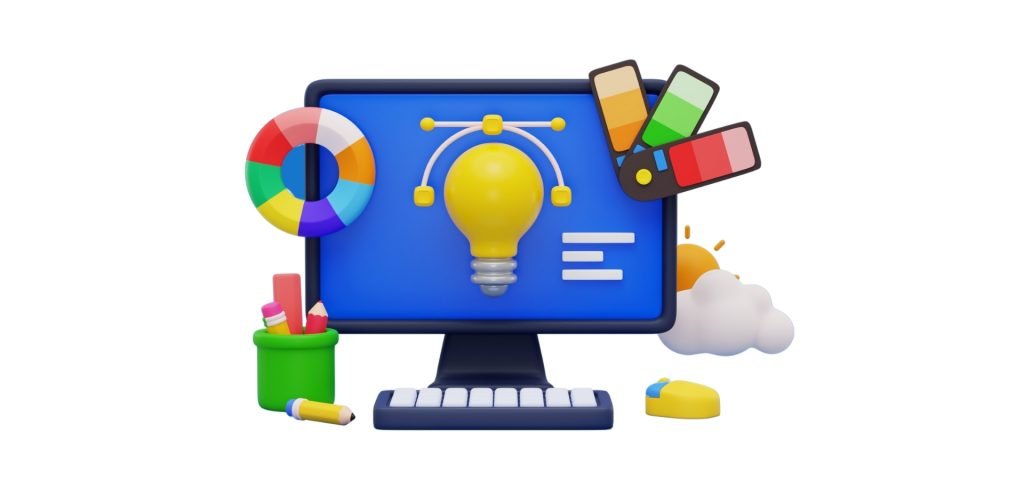Millions of people can have their issues resolved by an app developer. There is a great need for additional Android developers, yet there are only 5.9 million of them in the world. There is no better moment to start if you want to be an app developer. We’ve listed all the fundamentals you need to know for successful mobile app development.
- Choose an IDE for Android Development
Your journey begins with choosing an Integrated Development Environment, or IDE. An IDE is a piece of software that offers complete tools for software development to computer programmers. IDEs feature excellent functionalities for writing and editing source code, including syntax highlighting and autocomplete. When an IDE is aware of your language’s syntax, it offers a visual cue that clarifies various syntax aspects, making the code easier to comprehend.
It anticipates your next keystroke, which is a useful feature for writing code. Within the visibility scope, it can complete the names of classes, methods, fields, and keywords. Let’s look at some of the most well-liked IDEs used for Android development now that we are aware of some of the amazing capabilities offered by IDEs: IDEA, Eclipse, NetBeans, Komodo, and Android Studio. It’s difficult to pick the best IDE for writing your app. Before choosing one, there are a number of things to take into account.
- Pick a Language
There are just Kotlin and Java available as native Android development languages. The primary question is: How do you decide? The answer is not simple, though. We’ll have to examine both languages more closely.
Java
The preferred language for Android for ten years was Java, but in 2019, Kotlin took its position. It is an open-source, class-based, object-oriented programming language. Despite its antiquity, there are still good reasons why it was formerly one of the most widely used programming languages:
Works on nearly all systems.
Used for mobile apps and websites.
Free software
Accessible Public Spaces.
Object-Oriented
Learning Java would be a nice ability for a young developer to have, but it is not required.
Kotlin
Java has been replaced by Kotlin as the default language for developing Android apps. There are no surprises. JetBrains created it in 2011 and has continued to improve it ever since. The following are Kotlin’s primary characteristics:
Clear language
Clean and light
Combine aspects of functional and object-oriented programming
Used for web, iOS, and Android back ends.
As a final judgment, Java loses to Kotlin. It’s time to gain a deeper understanding of what an app actually is once you’ve chosen a language.
- Get Familiar With the Anatomy of an App
Without knowing the components of an automobile, automotive engineers cannot build one.
The same holds true for Android programmers. Let’s examine the parts that make up an app.
Activities
The best way to understand an activity is to look at an app screen. One app screen represents one activity and vice versa. It is an independent module of app functionality, fully reusable on other apps.
Fragments
While activities make up a single UI screen, fragments make up parts of an activity.
You can look at it as an activity broken into parts.
They’re a more efficient way of representing UI. Also, they’re great when you need to reuse an interface on different screens such as tablets.
Intents
Consider intentions as the connections between activities. They make it possible for you to switch between different tasks or screens.
Services
All of these procedures operate without a user interface.
We offer two different services:
Auxiliary services
Priority services
Background services come particularly handy when an app needs to keep running while the user isn’t using it. One can interact with foreground services, such as the notice the user receives when listening to music, and utilize it to control the app without an interface.
Application manifest
There is a crucial file with a list of all the significant program components. The AndroidManifest.xml is the name of it. It includes elements like:
Services
Broadcast receivers
Activities
Every project set for Android starts with it.
Resources
Resources like strings, fonts, colors, and images are contained in resource files. They can be utilized for both the creation of the user interface and the visualization of user interface layouts.
- Learn the Basics of UI
Your app’s user interface is its public face. It serves as a channel of communication for the user and the app. It would be an understatement to say it is significant. However, Android offers a number of pre-built components that make designing apps easy.
Layouts
Layouts make up the bulk of the user interface. They specify how your software is organized, using terms like an activity or a fragment.
The UI elements that the user can interact with are depicted in the view. As seen in the figure above, a ViewGroup serves as a container for the Views and other ViewGroup objects.
Widgets
The UI’s fundamental building components are widgets and views. A view is a screen-based rectangle that displays a specific type of content. It could be anything that an Android application can display, such as an image, a paragraph of text, a button, etc.
The most popular view classes are: TextView \sButton \sImageView \sEditText \sCheckBox \sSpinner \sRecyclerView
The Recycler View component is the best option for presenting bigger amounts of data, like lists.
- Learn the Paradigm of Asynchronous Programming
Larger amounts of data from an API or a local database must be fetched gradually. Asynchronous programming offers effective data state validation to cut down on that time there are two possible outcomes after an action is complete: either the data loaded and displayed successfully on the screen, or an error message was displayed to prompt the user to try again. - Choose Where to Store Your Data
When it comes to storing your data, you have a variety of options. You must first specify the kind and volume of data you wish to save. Use DataStore if you only need to store a single String or Boolean value. However, SQLite and Room are the best options if you need to store a lot of sophisticated data. - Connect your App to the Internet
Data from an API server is retrieved or modified using network requests. This is a typical task in the creation of mobile apps. Therefore, we’ll discuss some of the most well-known libraries that will simplify network handling on Android.
Retrofit
Retrofit is an Android-type-safe REST client that tries to make using RESTful web services simpler. It is constructed over OkHttp. Retrofit makes it simple to use Plain Old Java Objects (POJOs) created by parsing JSON or XML data (POJOs).
It provides a lot of capabilities, like the ability to create custom headers and request types quickly, which allows us to reduce the amount of boilerplate code in our apps and make it simple to use the web service.
We use annotations on the methods, such as @GET, @POST, @PUT, and @DELETE, to describe specific API endpoints and eventually the handling of requests. There are many more annotations that you may use; these are simply for fundamental CRUD activities.
Gson
Java objects can be transformed into their JSON representation using the Gson Java package. Additionally, it can be used to translate a JSON string into a corresponding Java object. With Kotlin data classes, it functions in the same way.
Moshi
A contemporary JSON library for Android, Java, and Kotlin is called Moshi. JSON parsing into Java and Kotlin classes is made simple by this.
- Choose the Right Application Architecture
Google didn’t advocate any one method for developing Android applications until the release of Android Jetpack; instead, it just offered tools and development kits, letting developers decide which was most effective for a given project. Google now supports single activity apps, which load many screens as content within a single activity, at the most fundamental level.
Also advised is the “separation of concerns,” or the division of various areas of accountability within the app into distinct modules. When creating an application, the architecture provides a roadmap and best practices to adhere to in order to create a well-structured program.
- Don’t Forget to Test Your Code
A crucial phase of the software development life cycle is testing (SDLC). You can ensure your app’s accuracy, usability, and functional behavior before you deploy it by regularly testing it. Additionally, testing has the following benefits:
Reduces Costs
Increases Security, and
Raises Product Quality
- Configure your Application Build
Resources and source code for apps are compiled by the Android build system and packaged into APKs for testing, deployment, and distribution. Gradle, a sophisticated build toolkit, is used by Android Studio to automate and control the build process. Android Studio is not required to use Gradle or the Android plugin. This implies that you can create Android apps using the command prompt on your computer or Android Studio.
WOWIT a development agency can help you with all your Mobile App Development needs. Book a call so we can discuss how to create a memorable digital experience for you.
Also Checkout:
7 Best Payment Gateways
7 Best Programming Languages for Mobile App Development
Mobile App Development Process | Lifecycle
How To Launch An App On Play Store


